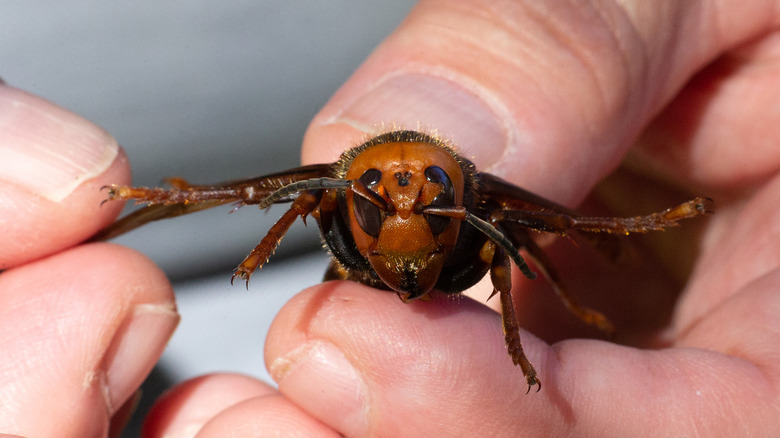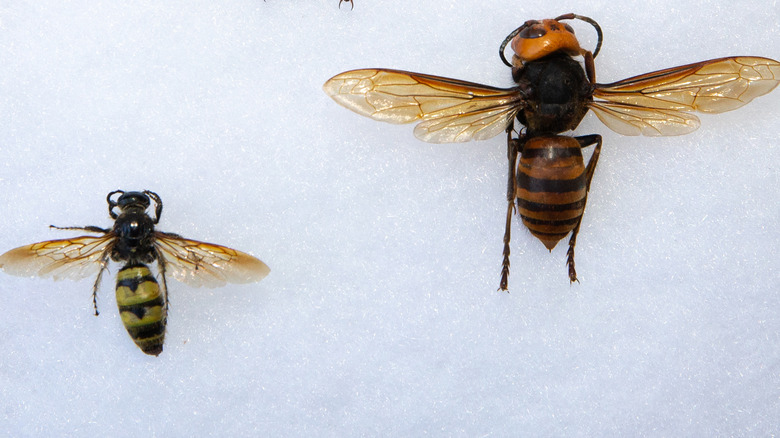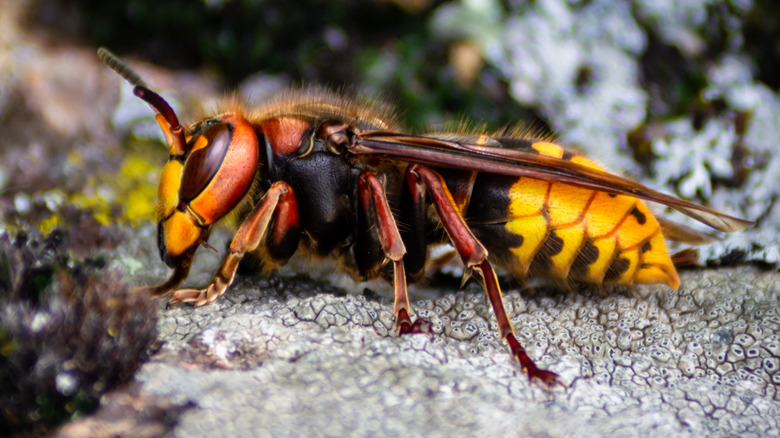Murder Hornets Have A Much More Friendly Image Now
Murder hornets made headlines in September when they were spotted in Washington. Growing up to two inches long, these giant hornets are typically found in Japan, where they kill up to 50 people per year, according to The New York Times. The first sightings in the U.S. last fall incited fears that the "invaders" would destroy all the bees (via The New York Times). When the hornets were found across the border in Canada as well, the threat became even more serious, although the origins of how the insects arrived in North America "remains under investigation," according to the Entomological Society of America.
But despite their fierceness, the hornets typically don't attack humans unless provoked, and the scientific community began to question whether the given name of "murder" hornets, which depicts them as villains in the insect world, was inciting a bit too much fear, according to CNN. Could it actually make the insect problems worse?
The new name
The Entomological Society of America (ESA) and the Entomological Society of Canada (ESC) both decided to officially change the hornet's name amid these concerns, from the "murder hornet," "giant Japanese hornet," or the "Asian giant hornet" to the "northern giant hornet," per CNN.
According to the Entomological Society of America, the name change came along with new guidelines for naming insects that prevents using racial or ethnic groups. The two groups also began the "Better Common Names Project," a set of guidelines to "review and replace insect common names that may be inappropriate or offensive."
"Even though the northern giant hornet has some negative things about it, like all of the 1.5 million insect species out there, it's got a complicated life," the ESC President Dr. Jessica Ware told CNN. "Some parts of its life history and ecology are really fascinating. It's been around for over millions of years before humans even came on the scene."
Why the change?
Per the Entomological Society of America, the name change was especially important amid the rise in hate crimes against Asian people during the pandemic, as the use of "Asian" in the name of a pest insect can "unintentionally bolster anti-Asian sentiment." Plus, all 22 species of wasps in this genus originate from Asia, so it isn't helping people identify this wasp for practical purposes anyways, the ESA notes.
Along with this hornet, the entomological societies are also working to rename the derogatory terms towards Romani people used in the names "gypsy moth" and the "gypsy ants," according to The Washington Post. As part of the new renaming project, individuals can submit names they find offensive to ensure the society tackles them all, per Mashable.
"Common names are an important tool for entomologists to communicate with the public about insects and insect science," Dr. Ware said in a press release. "Northern giant hornet is both scientifically accurate and easy to understand, and it avoids evoking fear or discrimination."


